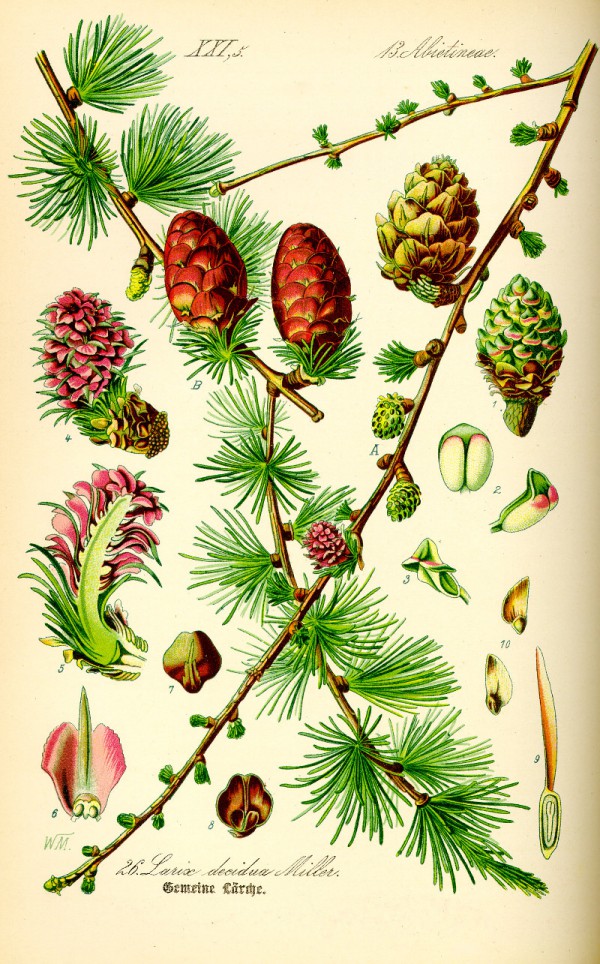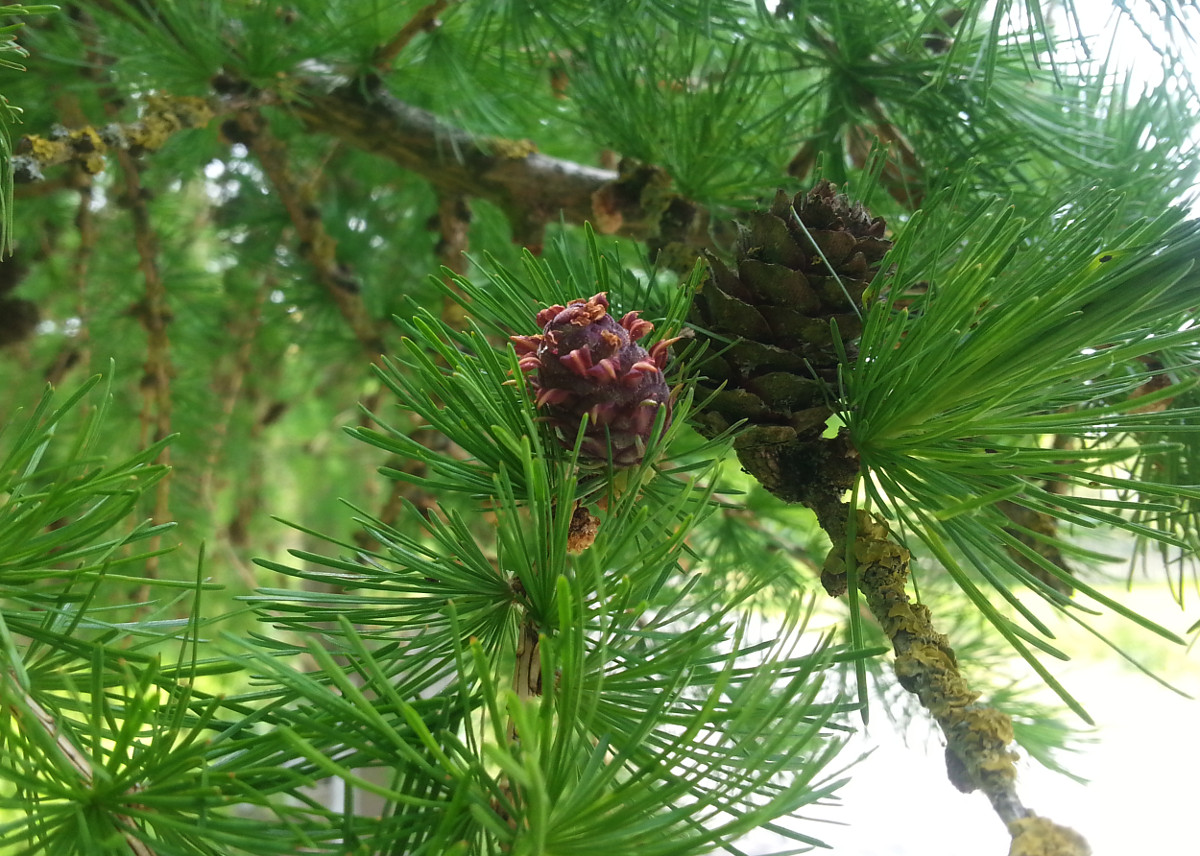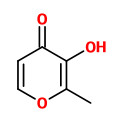Larix decidua Mill. - Pinaceae - European larch, Europäische Lärche
Deciduous coniferous tree, up to 50m high, native to Europe; bark grayish brown, cracking into irregular plates; needle-like leaves 2-3cm long, flat or occasionally slightly keeled adaxially; seed cones dark red or purplish, becoming green with pink scale margins, ovoid or ovoid-oblong, fresh ones resinous-fruity scented; seeds dark brownish gray, ovoid-cuneate, ca.4×2.5mm; wing pale brown, ovate.
http://www.efloras.org/florataxon.aspx?flora_id=2&taxon_id=200005282
The larch can easily be distinguished from other conifers, as in autumn and winter, for their relatives atypical, this tree throws off its needles when they are bright yellow-brown.
The terpene content of the resin from L.decidua was found to be very similar to that of L.leptolepis (Larix kaempferi, Japanese larch); α-pinene dominates with over 80%, and small amounts of β-pinene, camphene, myrcene and limonene are present, but δ-3-carene absent in both species.
[Monoterpene composition in Larix. Stairs, G.R., Silvae Genetica, Vol.17(5/6), 1968, 182-186]
http://sauerlaender-verlag.com/fileadmin/content/dokument/archiv/silvaegenetica/17_1968/17-5-6-182.pdf
Larch bark contains 0.1-2% maltol (depending upon the bark layer and the season of harvest) bound to glucose, extractable at industrial scale. It was first isolated from the bark as larixinic acid by J.Stenhouse in 1861 and its pleasant sweet odor as well as its slightly bitter and astringent taste is reported by him. The correct formula was provided by Brand in 1894, who isolated maltol from malt (hence the name).
[Heintz, D. N., Knowles, W. S., & Roos, C. W. (1970). U.S. Patent No. 3,501,501. Washington, DC: U.S. Patent and Trademark Office.]
https://www.google.com/patents/US3501501
[Maltol and ethyl maltol-from the larch tree to successful food additive., LeBlanc, D.T., Akers, A.H., Food Technology, 43(4), 1989, 78-84]
Main component of the essential oils from needles, wood and bark of L.decidua was α-pinene (28.5%, 44.7%, 38.3% resp.). The oil of the needles contained δ-3-carene (19.1%), β-pinene (11.9%), germacrene-D (9.9%), α-cadinol (4.1%), and δ-cadinene (3.0%). The wood oil had δ-3-carene (2.7%), β-pinene (10.2%), germacrene-D (12.4%), and β-phellandrene (6.0%). The oil of the bark contained also δ-3-carene (4.8%) and β-pinene (8.1%), but especially pinocarveol/cis-verbenol (3.1%), and 1.8-cineole (2.0%).
[Biology and chemistry of conifer oils., Kubeczka, K.H., Schultze, W., Flavour and fragrance journal, 2(4), 1987, 137-148]
By far the main component of the volatile fraction of the oleoresin from L.decidua was α-pinene.
[Gas-chromatographic determination of the composition of the volatile components of the oleoresins of some species of conifers. Khan, V.A., Salenko, V.L., Chemistry of Natural Compounds, Vol.26(5), 1990, 534-536]
Freshly exuded resin of L.decidua contains some amounts of epimanool and larixyl acetate.
These compounds do not survive ageing, so they cannot be used as markers of Venice turpentine, which is used in works of art.
[GC‐MS Characterisation and Identification of Natural Terpenic Resins Employed in Works of Art., Cartoni, G., Russo, M.V., Spinelli, F., Talarico, F., Annali di chimica, Vol.94(11), 2004, 767-782]

Thomé,O.W., Flora von Deutschland Österreich und der Schweiz, Tafeln, vol.1, t.26 (1885)
http://plantgenera.org/species.php?id_species=585423

Larix decidua flowering, CC BY-SA 3.0, Author: Andreas Kraska


